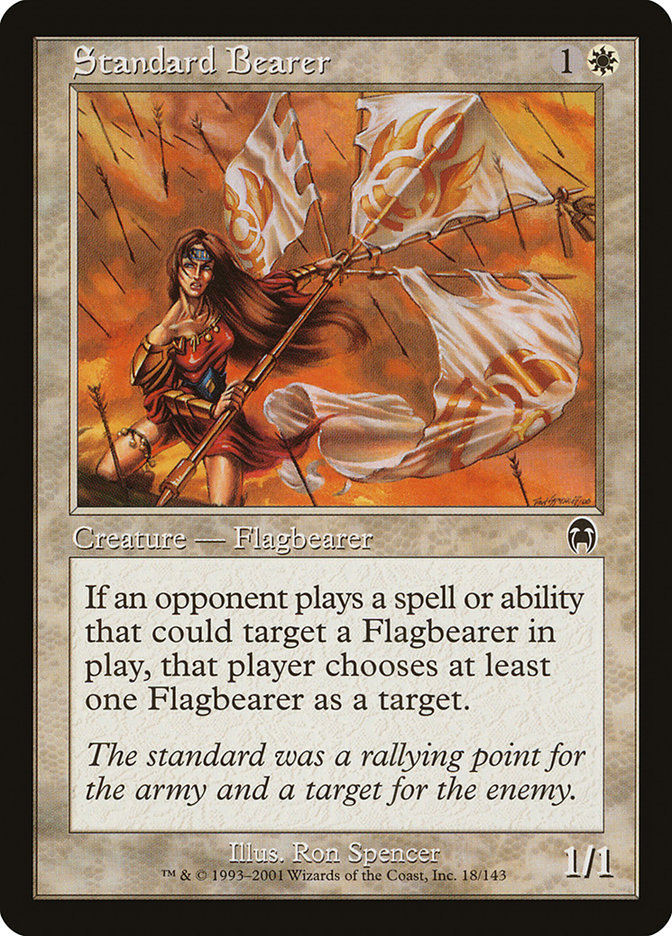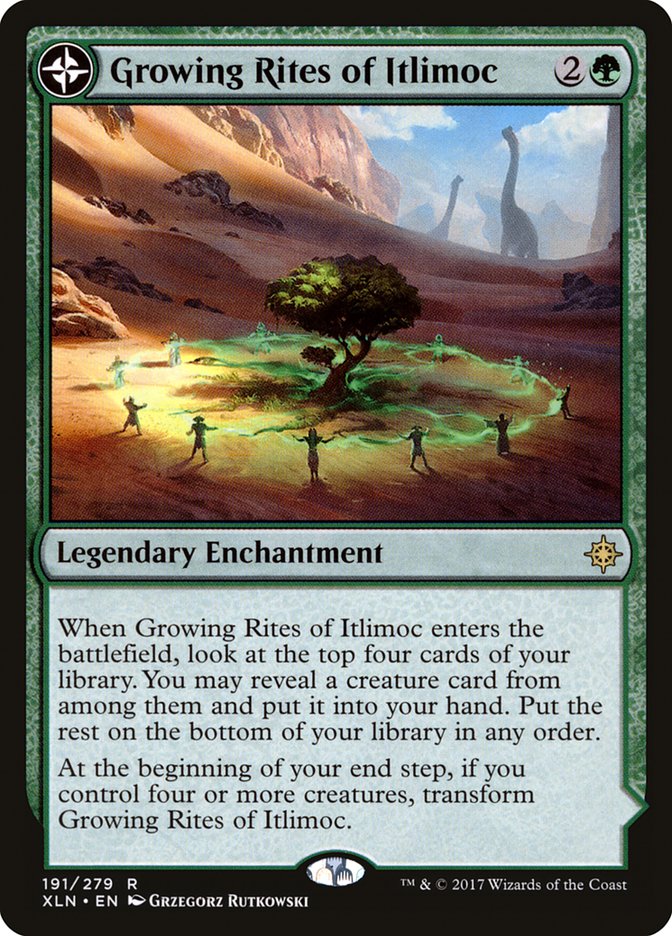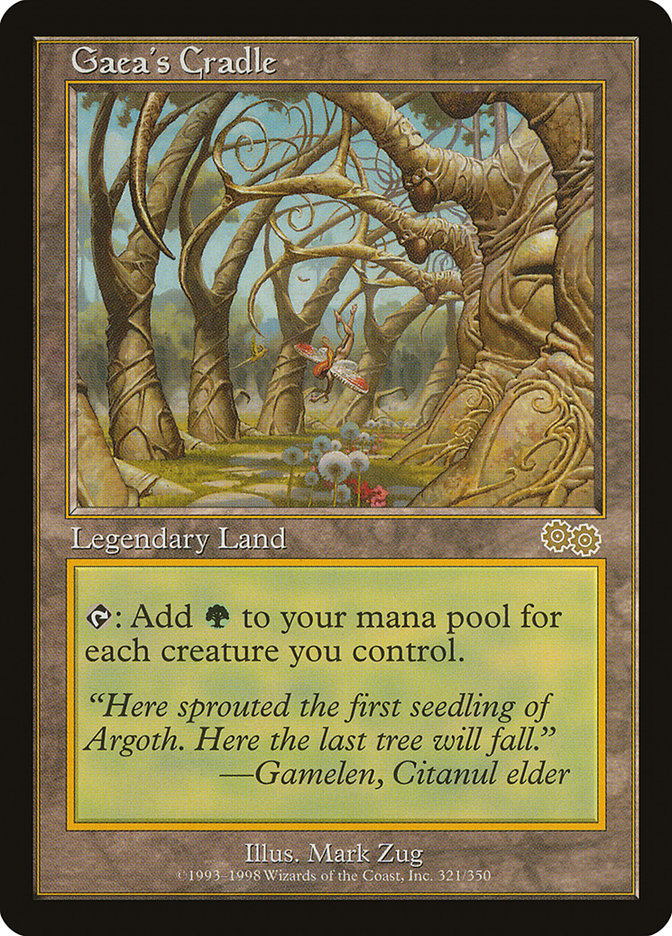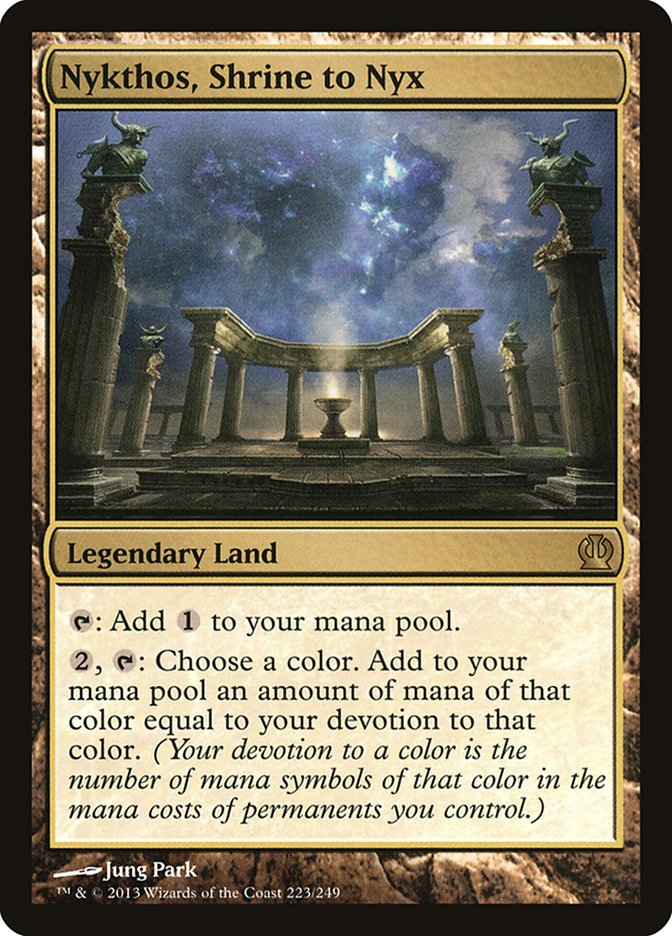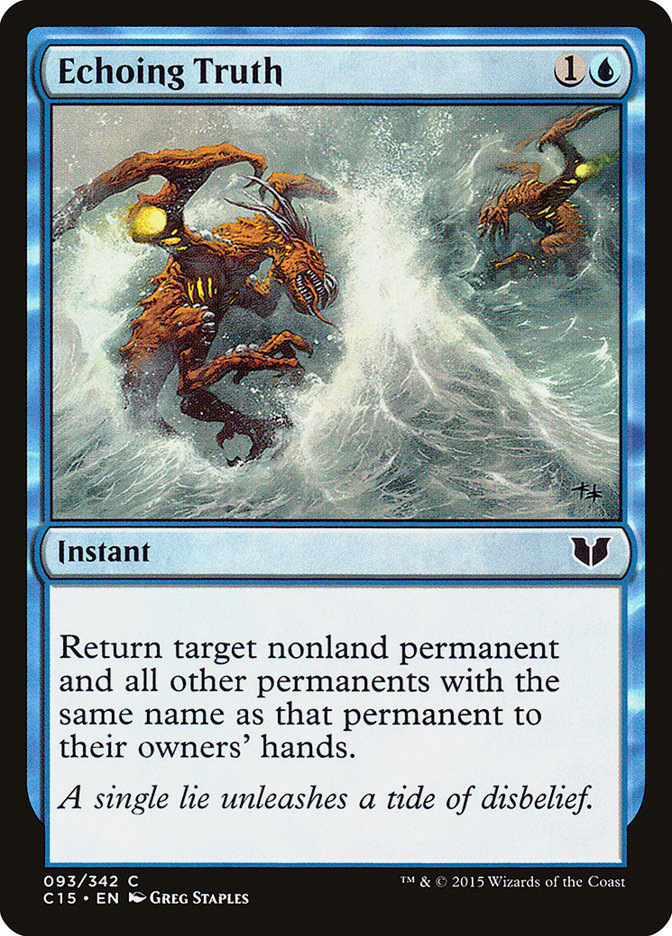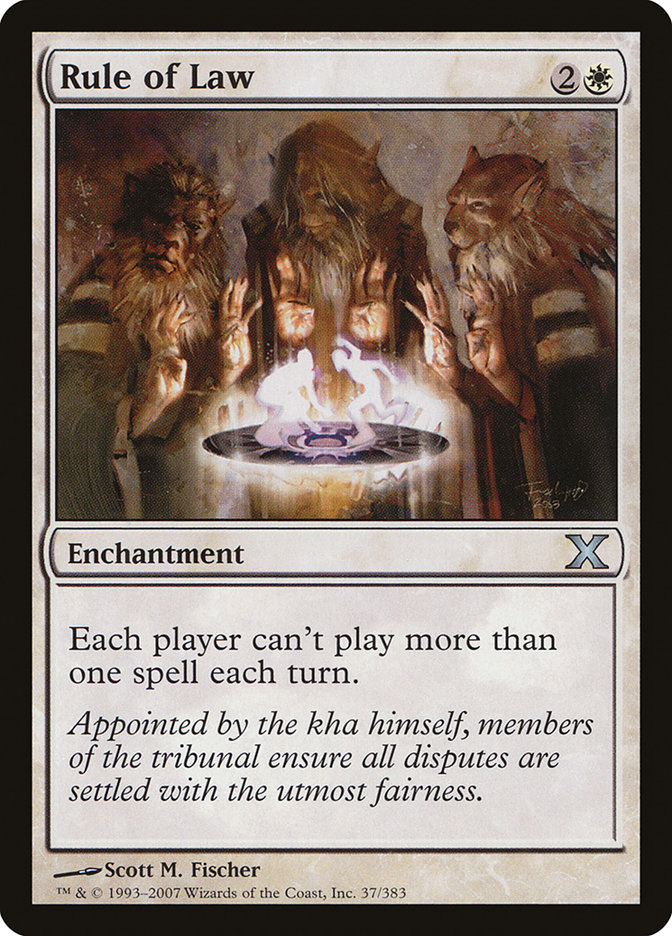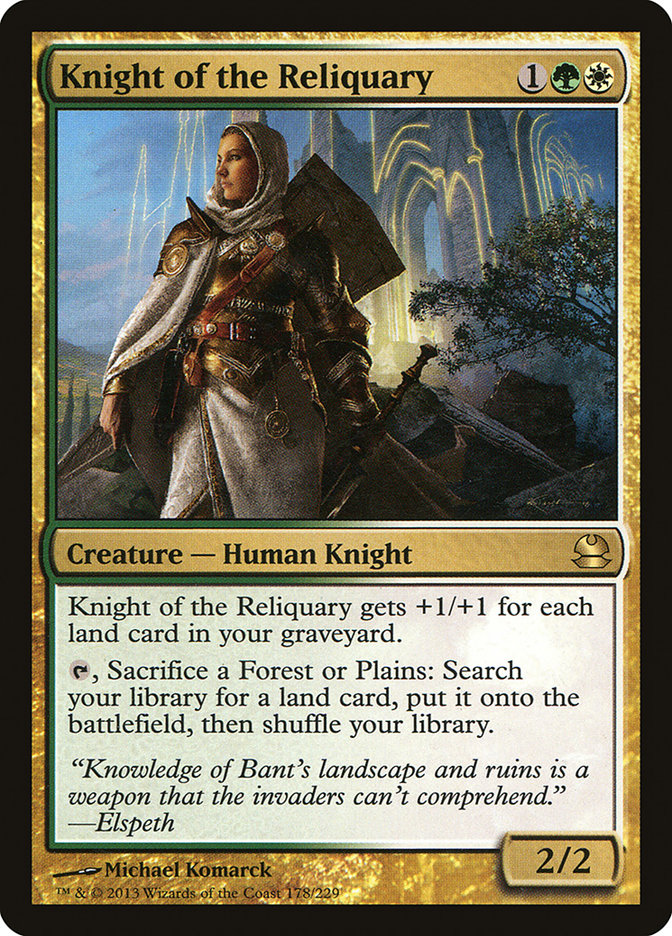I could’ve made this week much easier on myself by skipping US Nationals and instead attending the Open in Charlotte last weekend, since both Charlotte and #SCGCIN this weekend are Modern, where Nationals featured Standard and Draft. Trying to prepare for three formats in two weeks is always going to be a slog, but the allure of the World Magic Cup and the title of US National Champion drew me to Richmond on an ultimately quixotic quest.
I don’t know if I’m in the minority here, but titles like National Champion that translate very easily outside of the Magic community have a lot of value to me. I’ve spent countless hours of my life explaining Magic to the uninitiated, often to confused looks and condescending responses. Having to further explain the structure of competitive and professional Magic only adds another layer of complexity so having a go to accomplishment that doesn’t require all the preceding rigmarole would be quite nice.
Plus, being the champion of your country is pretty cool.
It’s important not to center things like titles and trophies too much or you risk losing sight of the more important goal of playing your best and constantly improving, but having goals that are specific to you is healthy. At least, my armchair psychologist brain thinks so.
Moving on, I now find myself playing from behind again, trying to figure out what to play in Modern. Fortunately, the metagame has been fairly stable over the last two months or so, and Ixalan has had a relatively minor impact on the format, which is typical. With a week to prepare, I’m not going to be comprehensive in my testing, instead looking at the three archetypes I am highest on right now, working on those decks, and making my decision from there.
So that’s where I am for this week. Thanks for reading!
…
Oh, you want to know what those three archetypes are? And maybe why I think they’re good? I suppose that’s not too much to ask.
In no particular order:
Elves
This shouldn’t be a surprise, as I’ve written about this deck and played it in multiple VS Videos over the last two months. I put up a good finish with it in my last Modern tournament, so running it back would make sense.
For my detailed thoughts on that deck and why I think it’s generally underrated in Modern, I’ll refer you to the aforementioned article, but there are a few questions about the deck that need to be answered.
First is the question of Growing Rites of Itlimoc. Is this card good in the deck? Despite my positive experience with the card in one VS Video, I have to say no. Keeping the curve for Elves as low as possible is very important for the deck’s explosiveness, and the easiest way for Elves decks to muck up their curves is by playing too many three-drops, since there are lots of solid options.
Growing Rites of Itlimoc doesn’t affect the battlefield despite the high cost of three mana, and transforming it only happens when things are going quite well, making the card a win-more much of the time. When playing Elves, I didn’t need help winning the games when I played four or more creatures on the early turns of the game and they all survived.
Few people in this world love Gaea’s Cradle as much as I do. Growing Rites of Itlimoc is not Gaea’s Cradle.
The second question is which build to play. I’ve professed my support for G/W Vizier Elves as the best version of the deck because of its ability to threaten two different types of gameplans, thus forcing the opponent into difficult decisions as to how to defend against both strategies simultaneously. The combo element also helps you race opposing non-interactive decks by increasing your likelihood of a Turn 3 kill.
That said, I think the black version has some positives, most importantly having reach from Shaman of the Pack against removal-heavy control decks, which I struggled against with G/W. Thoughtseize out of the sideboard should also help these matchups, which are quite popular right now, as well as help compensate your reduced speed against combo decks.
I’ve put in a lot of thought in how the two builds differ on a fundamental level and I think I’ve arrived at lists that accurately reflect those differences. They are as follows:
Creatures (34)
- 4 Llanowar Elves
- 4 Heritage Druid
- 4 Devoted Druid
- 4 Nettle Sentinel
- 1 Elvish Visionary
- 4 Elvish Archdruid
- 4 Ezuri, Renegade Leader
- 4 Elvish Mystic
- 4 Dwynen's Elite
- 1 Vizier of Remedies
Lands (18)
Spells (8)

Not much has changed here from the lists I’ve written about before. Once you commit to adding the combo to the deck, there aren’t a lot of free slots to work with. Some lists trim on Nettle Sentinel, but it’s part of your most explosive draws and one of your better creatures when on the beatdown plan, plus I want a lot of one-mana creatures for Chord of Calling.
Now look at the G/B list:
Creatures (35)
- 4 Llanowar Elves
- 1 Elves of Deep Shadow
- 4 Heritage Druid
- 4 Nettle Sentinel
- 4 Elvish Visionary
- 4 Elvish Archdruid
- 2 Ezuri, Renegade Leader
- 4 Elvish Mystic
- 4 Dwynen's Elite
- 4 Shaman of the Pack
Lands (18)
Spells (7)

The maindecks, outside of the manabase, differ from G/W to G/B by the following cards:
vs.
These changes reflect the fact that the G/W deck has a combo element, whereas the G/B list wants to get on the battlefield as swiftly as possible. Chord of Calling is slow and clunky for a deck trying to be fast, but it’s integral to the combo. Ezuri, Renegade Leader is another combo piece for the G/W version and as a result you want four copies, but the G/B list is built around Shaman of the Pack, and you don’t want twelve three-drops, so you trim a couple and fill out your two-drop slot with more copies of Elvish Visionary.
Visionary helps the black build generate a critical mass of Elves to maximize Shaman of the Pack’s ability, which is also why I’ve chosen to add a ninth mana creature to the deck in Elves of Deep Shadow and replace Chord of Calling with the more efficient but less flexible Lead the Stampede. You just want the maximum volume of Elves and to get them on the battlefield as quickly as possible.
That aggressive plan also makes Westvale Abbey more attractive, since you’ll more often have five creatures to sacrifice to it and have done enough damage that Ormendahl, Profane Prince is lethal in one attack, which forces your opponent to play more conservatively to protect themselves from it. G/W, however, makes better use of Nykthos, Shrine to Nyx by having more copies of the best mana sink, Ezuri, Renegade Leader.
Without Chord of Calling, I’ve given the G/B list a more generic sideboard, with powerful options to shift toward a more generic disruptive aggro deck that isn’t as all-in on the Elf synergies after your opponent brings in more appropriate disruption. The G/W list still has plenty of bullets to find that knock out matchups by themselves.
I think both Elves lists are good against fair decks that aren’t packing a lot of sweepers, and have the capability to race many of Modern’s non-interactive decks, making them a good choice. Still, the most recent three Modern Opens have been won by Storm, Jeskai Control, and Storm, both of which I count among the deck’s worse matchups, which makes me wary of playing the deck right now. I’ll be working on those matchups most closely and if I can improve them enough this will be my deck of choice.
Storm
Creatures (6)
Lands (17)
Spells (37)
- 4 Sleight of Hand
- 4 Serum Visions
- 4 Gifts Ungiven
- 4 Desperate Ritual
- 4 Opt
- 3 Remand
- 3 Grapeshot
- 4 Manamorphose
- 4 Pyretic Ritual
- 1 Noxious Revival
- 2 Past in Flames
Sideboard

Speaking of Storm, it’s also no surprise that I’m a fan of this deck, and given its recent performance, there’s a strong case to make that it’s the best deck in Modern right now. It gained a third good cantrip in Opt that it was previously missing. You really want your cantrips to provide some selection on top of the draw here, so Thought Scour wasn’t cutting it, but now there’s no need to play clunkier options like Strategic Planning or Peer Through Depths, strengthening an already top-tier deck.
I’m a fan of Paul Muller’s winning list from Charlotte, featured above, with two quibbles. First, I instinctively prefer the fetchland manabase, and second, I think Dismember’s stock will go up as players scramble to put Eidolon of Rhetorics in their sideboards.
Echoing Truth could also be more valuable if we see things like Rule of Law. The main takeaway is that Storm pilots must prepare for the hate to come.
And that’s precisely what worries me most about playing this deck. Is Storm good enough to win when there’s such a large target on its back? I’m not so sure and would prefer to play a deck that is more under the radar. Even if dedicated hate doesn’t increase by that much, we could see players go back to heavy discard decks en masse, which are tough for Storm to slog through, although Pieces of the Puzzle certainly helps. Grixis Death’s Shadow, Jund, and Abzan combined have been about 13% of the Day 2 metagame recently on the SCG Tour, so there’s definitely room to grow.
And finally, I’m skeptical of Remand’s place in the deck. Sure, having some protection in a combo deck is typical, but Remand isn’t great at doing that here. It can also help you against other combo decks, but few in the format are faster than Storm. In my experience with the deck Remand was lackluster and I wonder whether focusing more heavily on your own gameplan would be a better Game 1 configuration.
Should I find that the metagame isn’t properly adapting or Storm is simply powerful enough to fight through it, I’ll be bringing my Caleb Scherer token this weekend.
Knight of the Reliquary
I’m using Knight as a placeholder for a few decks, all championed by Todd Stevens: G/W Company, Bant Knightfall, and Humans Knightfall. Ari Lax noted in his article yesterday that these decks are being criminally underplayed right now, which I agree with, and these decks all match up well with disruption-heavy fair decks because of their high individual card quality and ability to play effectively from the early- to the late-game. Should the metagame shift against both Elves and Storm, these decks should be poised to take advantage.
Of the three archetypes, the former two are most intriguing to me. The Human lists have some very powerful starts, but I’m attracted to these decks for their individual card quality, so I’d rather not sacrifice that for more synergy. If that’s a sacrifice worth making, then Elves is likely a better choice for a Collected Company deck.
To start, G/W Company is likely the best deck in Modern in attrition games, utilizing of all the powerful, advantage-generating green creatures that have been printed in recent years.
I’m fortunate to have Todd Stevens as a resource in my own backyard (don’t worry, I make sure he has space to run around and feed him three times a day), so I’ll be picking his brain about the deck when working on it, and certainly starting with his most recent list:
Creatures (29)
- 1 Azusa, Lost but Seeking
- 4 Birds of Paradise
- 1 Eternal Witness
- 2 Aven Mindcensor
- 4 Noble Hierarch
- 4 Knight of the Reliquary
- 2 Scavenging Ooze
- 3 Voice of Resurgence
- 4 Courser of Kruphix
- 2 Tireless Tracker
- 2 Ramunap Excavator
Lands (23)
Spells (8)

You can find his thoughts on the deck here and here, so I won’t go into much detail. The Storm matchup is my main concern, since the deck has very little disruption and a clock that’s at least a turn slow in Game 1, and there’s only so much that two copies of Eidolon of Rhetoric can do. There’s also the threat of Scapeshift decks, which are still around although they’ve recently waned a bit in popularity. Midrange-y creature decks are typically heinous against Primeval Titan and I don’t think that appreciably changes here, although you can at least put up a fight with Aven Mindcensor and Ghost Quarter recursion.
Personally, I’m a bigger fan of Bant Knightfall anyway. The combo element of the deck adds a similar dimension as Vizier of Remedies did to Elves, and the blue splash gives the deck some much-needed disruptive elements in Spell Queller and Reflector Mage.
Spell Queller is simply a great card in Modern and will remain so long as Fatal Push is the dominant removal spell over Lightning Bolt. It perfectly slots into a Collected Company shell, providing the needed disruption against combo decks without detracting from the creature count needed for the deck’s namesake card.
Reflector Mage essentially fills the same role against creature decks and is especially good against Eldrazi Tron, which remains popular despite a recent dip in its performance. These two cards turn what would otherwise be a pile of creatures into a highly disruptive machine that can play defense and offense simultaneously, leaving the opponent struggling to keep up, with the omnipresent threat of dying on the spot to the Knightfall combo.
I’ll start with the following list:
Creatures (28)
- 4 Birds of Paradise
- 4 Noble Hierarch
- 4 Knight of the Reliquary
- 1 Qasali Pridemage
- 2 Scavenging Ooze
- 1 Thalia, Guardian of Thraben
- 3 Voice of Resurgence
- 4 Reflector Mage
- 1 Thalia, Heretic Cathar
- 4 Spell Queller
Lands (22)
Spells (10)

This list is heavily skewed towards beating the traditionally bad matchups for Company decks like Storm and Scapeshift, even though the blue cards already help in that regard, simply because I think these decks are already quite good against fair decks. I may have overcorrected, but I can always move back with more copies of Tireless Tracker or even something like Gideon, Ally of Zendikar as a powerful threat that is resilient to most removal.
This is the deck I’ll be playing should I think the metagame is too prepared for the other options. It’s definitely the safest option of the three, since its power level ensures matchups can’t get too bad, so this is also likely the default should my testing be inconclusive.
Trying to thoroughly test three decks, two with multiple variants, may seem like a lot, but after a week of trying to prepare for two formats, I’m happy with where I am. Testing you do with one deck in a format invariably informs your testing of any other deck, so all the work builds on itself in a way that makes the process faster. And given Modern’s uncharacteristic stability in recent months, I’m confident I’ll have a good list for this weekend.
And hopefully some good chili, too.


